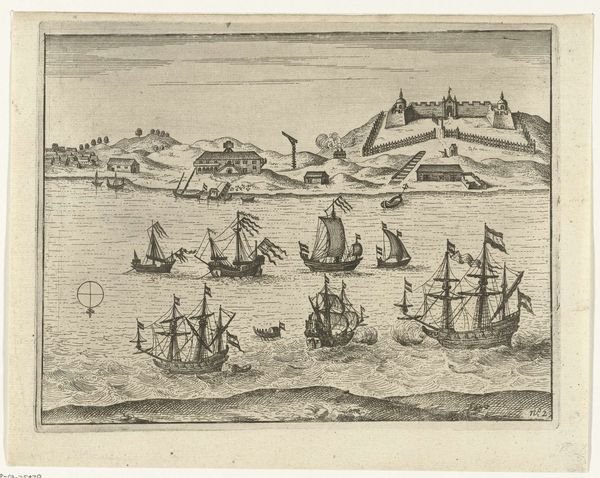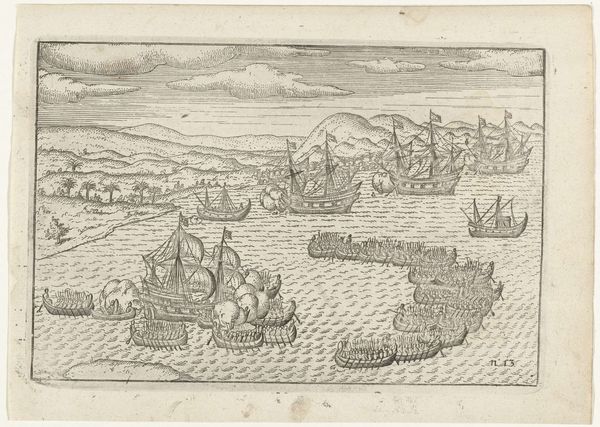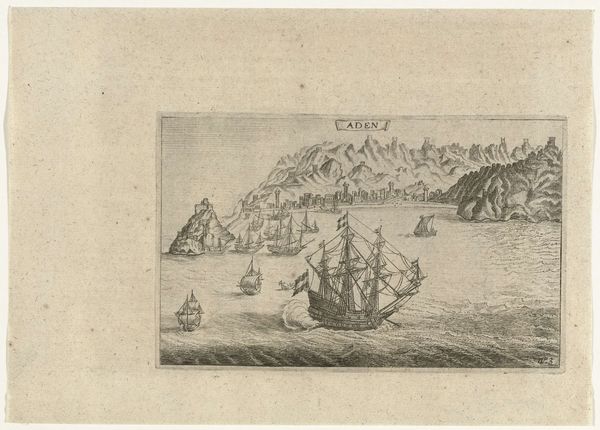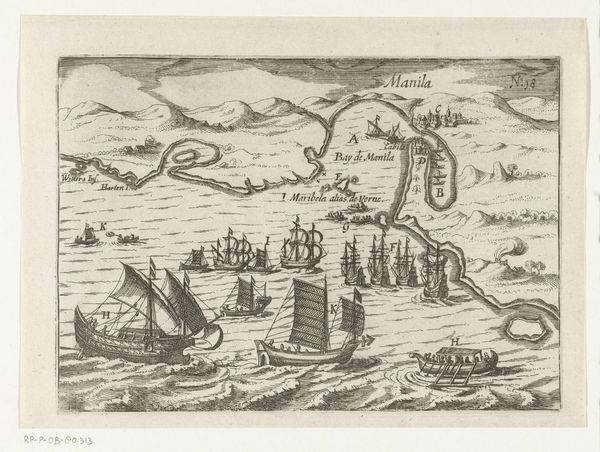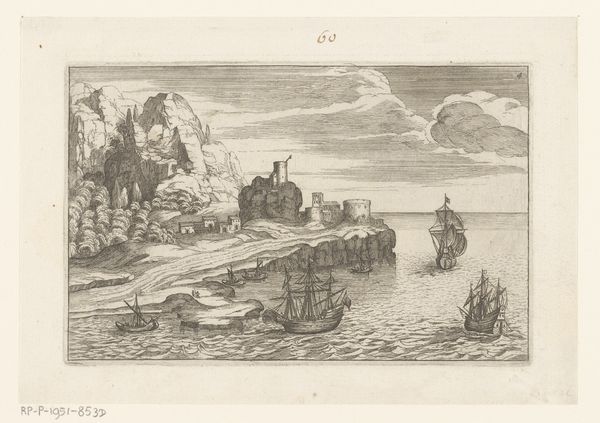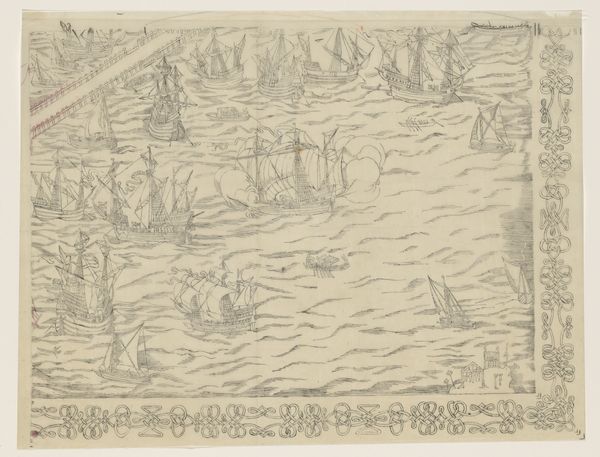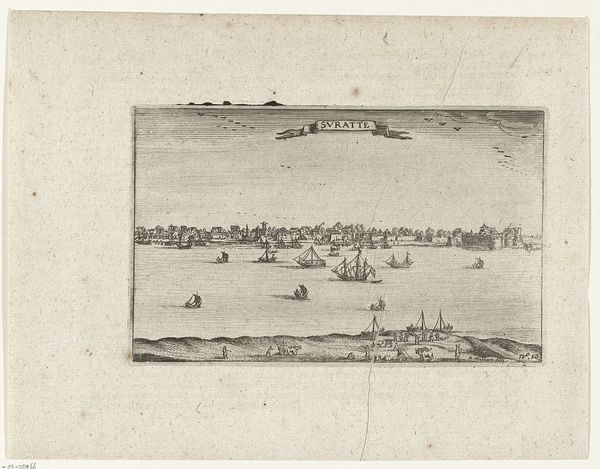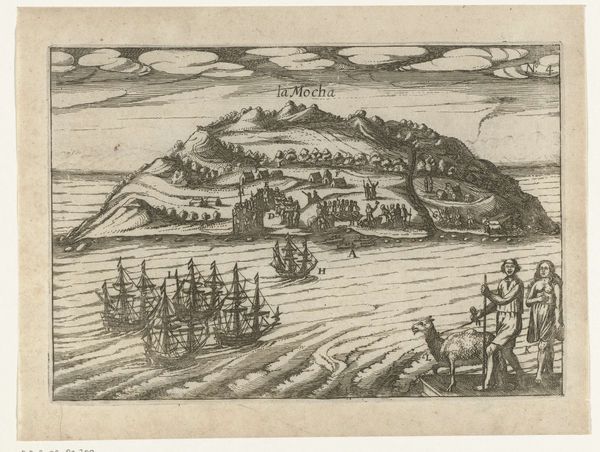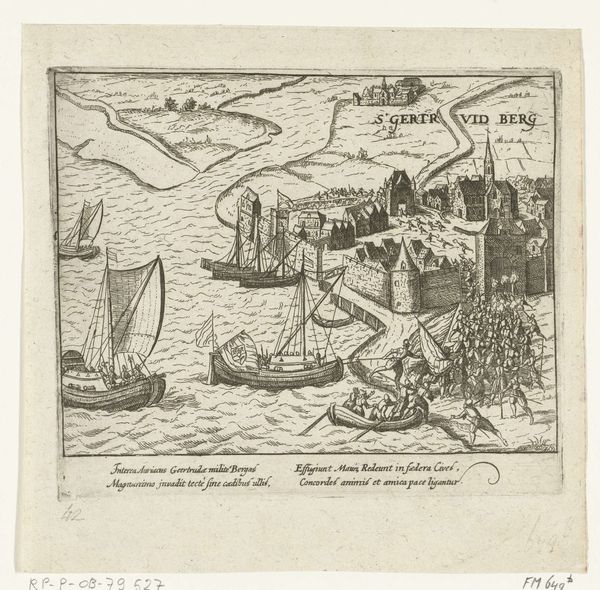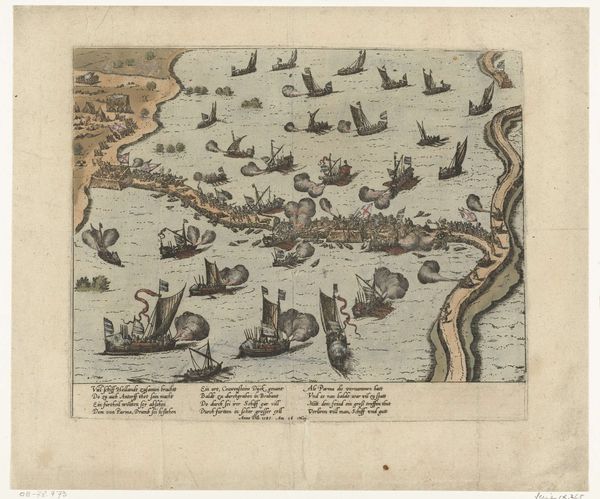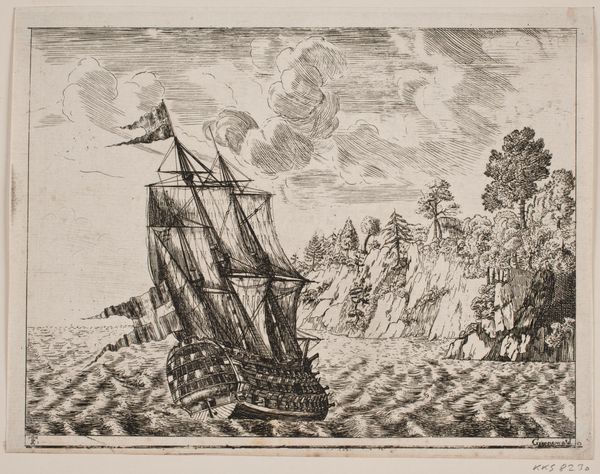
Verovering van Gran Canaria door de vloot onder admiraal Pieter van der Does, 1599 Possibly 1600 - 1649
0:00
0:00
print, engraving
#
baroque
# print
#
pen sketch
#
old engraving style
#
pen work
#
cityscape
#
history-painting
#
engraving
Dimensions: height 226 mm, width 310 mm
Copyright: Rijks Museum: Open Domain
Curator: This print captures a rather dramatic moment in history: "The Conquest of Gran Canaria by the Fleet under Admiral Pieter van der Does, 1599" possibly dating between 1600 and 1649, attributed to Bartholomeus Willemsz. Dolendo. The detail rendered through engraving is truly captivating. Editor: It's quite overwhelming, isn't it? A scene teeming with ships and conflict. The monochrome palette heightens the drama, creating an almost chaotic first impression. It's the sort of image that begs to be deciphered. Curator: Absolutely. Consider the symbolic weight of such a visual representation during that era. Conquest scenes were potent reminders of power, meticulously crafted to impress viewers with the scope and might of military campaigns. Every ship, every soldier contributes to the intended grandeur. Editor: And there’s a distinct separation of spaces here; on the left, we have the settlement, seemingly under siege. In the center, a forest of masts representing naval power. To the right is higher ground with yet more conflict. The way the image has been compartmentalized is fascinating; what does it tell us? Curator: It seems less like a realistic depiction, and more an assertion of Dutch dominance over a distant land. These visual elements often worked together to create a psychological impact. Think about the intended audience—what feelings were being evoked, and what values reinforced by observing a scene of conquest executed with such precision and might? Editor: It’s interesting to see it positioned within the Rijksmuseum’s collection now. It prompts reflection on colonialism’s long shadow and the complicated narratives surrounding the Golden Age. How do we reconcile the artistic skill with the uncomfortable history represented? Curator: That’s precisely where understanding the politics of imagery becomes crucial. By critically engaging with images like this, we can trace how art shapes our perceptions of history. We consider the intent and the result together to reveal new ways to comprehend our shared past. Editor: Thank you. That's helped me contextualize the image and the culture which prompted its creation. I find myself reflecting now on which narrative the artist wanted to create, and what he chose to omit.
Comments
No comments
Be the first to comment and join the conversation on the ultimate creative platform.
